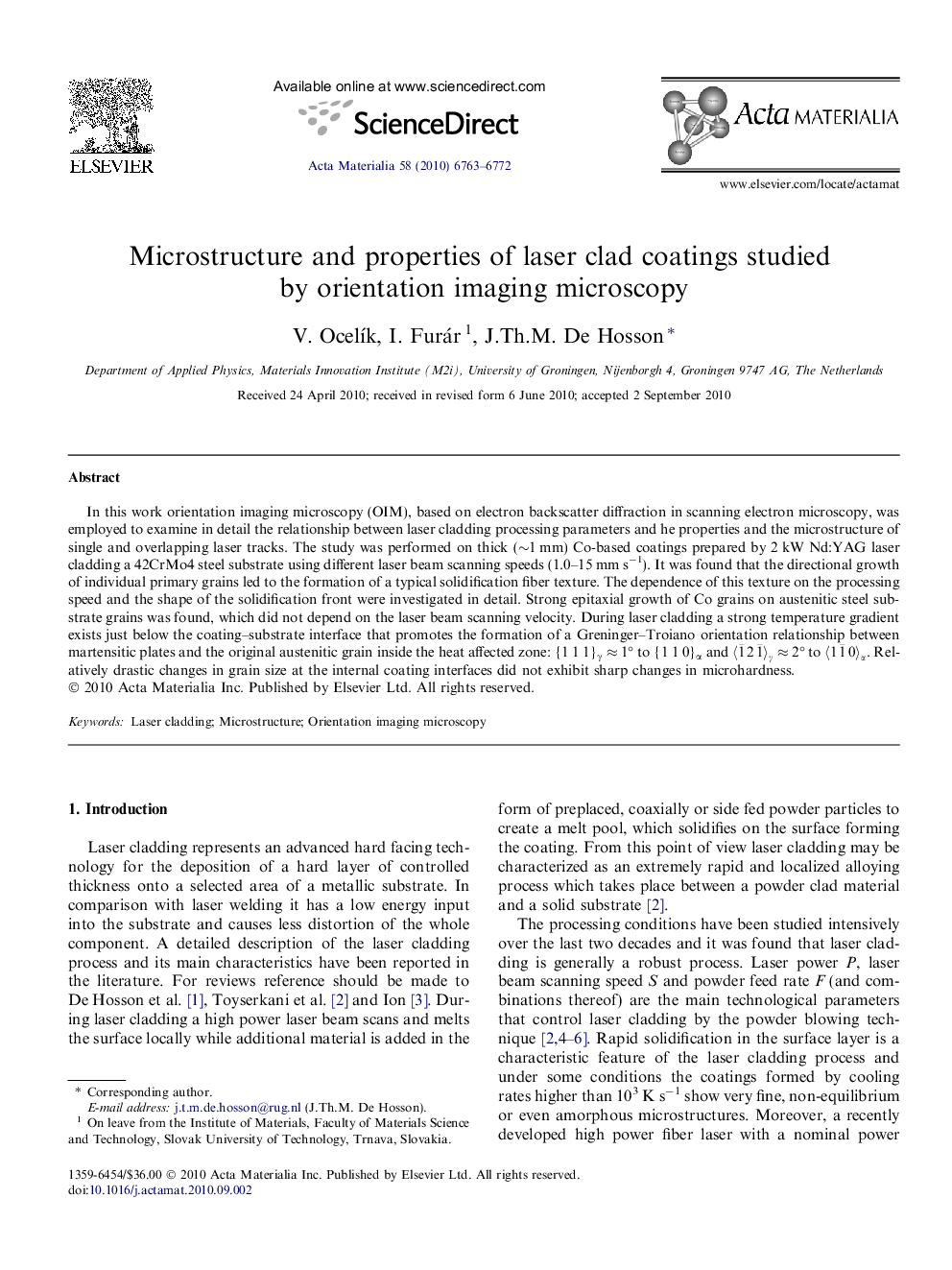| Article ID | Journal | Published Year | Pages | File Type |
|---|---|---|---|---|
| 1447961 | Acta Materialia | 2010 | 10 Pages |
In this work orientation imaging microscopy (OIM), based on electron backscatter diffraction in scanning electron microscopy, was employed to examine in detail the relationship between laser cladding processing parameters and he properties and the microstructure of single and overlapping laser tracks. The study was performed on thick (∼1 mm) Co-based coatings prepared by 2 kW Nd:YAG laser cladding a 42CrMo4 steel substrate using different laser beam scanning speeds (1.0–15 mm s−1). It was found that the directional growth of individual primary grains led to the formation of a typical solidification fiber texture. The dependence of this texture on the processing speed and the shape of the solidification front were investigated in detail. Strong epitaxial growth of Co grains on austenitic steel substrate grains was found, which did not depend on the laser beam scanning velocity. During laser cladding a strong temperature gradient exists just below the coating–substrate interface that promotes the formation of a Greninger–Troiano orientation relationship between martensitic plates and the original austenitic grain inside the heat affected zone: {1 1 1}γ ≈ 1° to {1 1 0}α and 〈1¯21¯〉γ ≈ 2° to 〈11¯0〉α. Relatively drastic changes in grain size at the internal coating interfaces did not exhibit sharp changes in microhardness.
